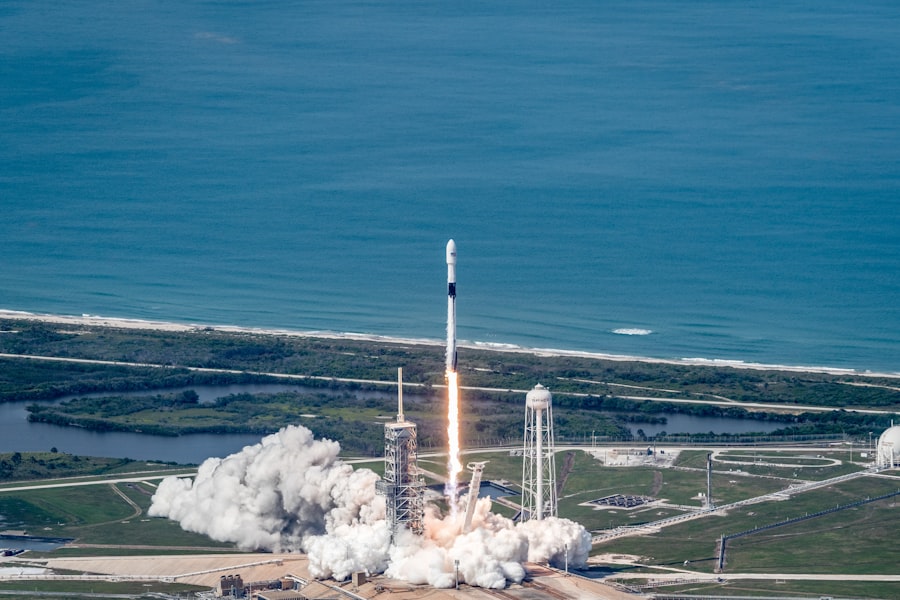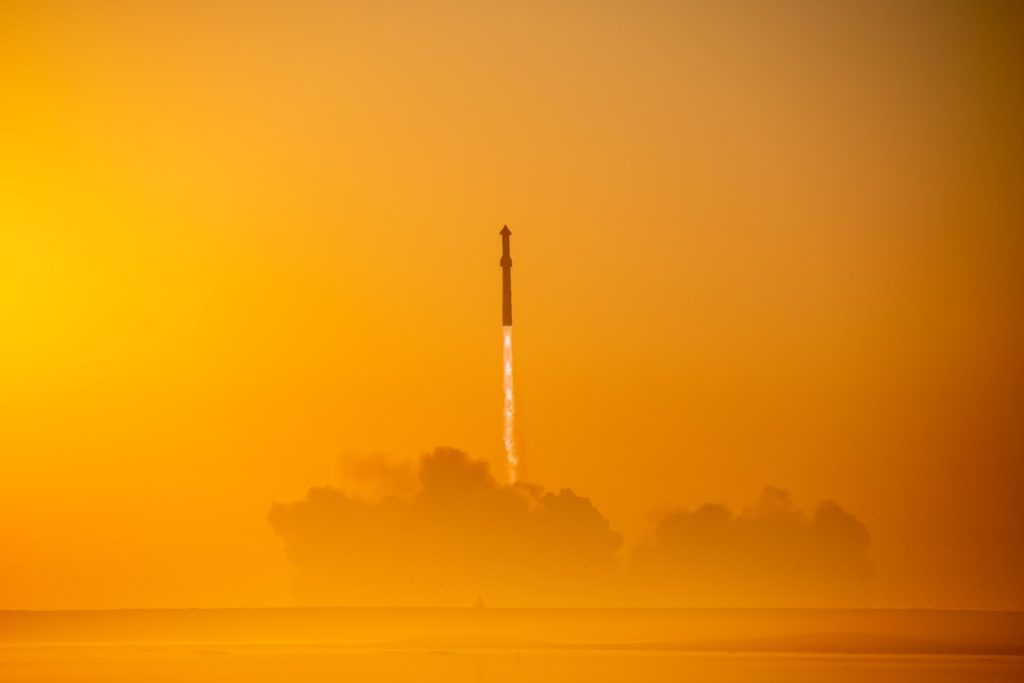The successful launch of a rocket represents a monumental achievement in the realm of aerospace engineering and space exploration. It is not merely a technical accomplishment; it symbolizes the culmination of years, if not decades, of research, development, and collaboration among scientists, engineers, and various stakeholders. Each successful launch serves as a testament to human ingenuity and our relentless pursuit of knowledge beyond our planet.
The implications of these launches extend far beyond the immediate mission objectives; they inspire future generations to dream big and push the boundaries of what is possible. Moreover, a successful rocket launch often has significant geopolitical and economic ramifications. Nations invest heavily in their space programs, viewing them as a means to assert technological prowess and foster international prestige.
For instance, countries like the United States, China, and Russia have long recognized the strategic importance of space exploration, leading to increased funding and support for their respective space agencies. The successful launch of a rocket can also stimulate economic growth by creating jobs in high-tech industries and fostering innovation in related fields such as telecommunications, materials science, and robotics.
Key Takeaways
- The successful rocket launch signifies a major milestone in space exploration, showcasing advancements in technology and capability.
- The technology behind the rocket launch demonstrates the progress in engineering and innovation, paving the way for future missions.
- The mission objectives and goals include gathering data, conducting experiments, and advancing scientific knowledge in space exploration.
- The crew and ground team play a crucial role in ensuring the success of the mission, demonstrating teamwork and expertise in their respective roles.
- The impact on space exploration includes opening up new possibilities for further exploration, research, and potential colonization of other planets.
The Technology Behind the Rocket Launch
The technology that underpins a successful rocket launch is a complex interplay of advanced engineering disciplines, including aerodynamics, propulsion, materials science, and computer science. At the heart of any rocket is its propulsion system, which typically consists of either liquid or solid fuel engines. Liquid engines, such as those used in NASA’s Space Launch System (SLS), offer greater control over thrust and can be shut down or restarted during flight.
In contrast, solid rocket boosters provide immense power but lack the flexibility of their liquid counterparts. The choice of propulsion system is critical and often dictates the overall design and capabilities of the rocket. In addition to propulsion, the structural integrity of the rocket is paramount.
Engineers must ensure that the materials used can withstand extreme temperatures and pressures during launch and ascent. Advanced composites and alloys are often employed to reduce weight while maintaining strength. Furthermore, the rocket’s guidance and control systems are essential for ensuring that it follows the intended trajectory.
These systems rely on sophisticated algorithms and real-time data processing to make adjustments during flight, showcasing the importance of software engineering in modern rocketry.
The Mission Objectives and Goals

Every rocket launch is driven by specific mission objectives that guide its design and execution. These objectives can vary widely depending on the nature of the mission—be it scientific research, satellite deployment, or crewed spaceflight. For instance, a mission aimed at deploying a satellite into orbit will have different requirements than one focused on interplanetary exploration.
In many cases, missions are designed to gather data that can enhance our understanding of fundamental scientific questions or address pressing global challenges. One notable example is NASA’s Mars missions, which aim to explore the Red Planet’s geology, climate, and potential for past or present life. Each mission builds upon the findings of its predecessors, with objectives that evolve based on new discoveries.
The Mars 2020 mission, which included the Perseverance rover, was designed not only to search for signs of ancient life but also to collect samples for future return to Earth. This layered approach to mission objectives underscores the importance of strategic planning in space exploration.
The Role of the Crew and Ground Team
| Metrics | Crew | Ground Team |
|---|---|---|
| Training | Extensive training in operating the spacecraft and handling emergencies | Training in mission control operations and support for crew activities |
| Communication | Constant communication with mission control and other crew members | Provide real-time support and guidance to the crew |
| Operations | Execute mission objectives and conduct experiments | Monitor spacecraft systems and provide technical support |
| Support | Provide medical assistance and psychological support to crew members | Coordinate logistics and provide administrative support |
The success of a rocket launch is not solely dependent on the technology involved; it also hinges on the expertise and coordination of both the crew and ground team. In crewed missions, astronauts undergo rigorous training that prepares them for the challenges they will face in space. This training encompasses everything from technical skills related to operating spacecraft systems to physical conditioning that ensures they can withstand the rigors of microgravity.
The psychological resilience of astronauts is equally important; they must be able to work effectively as a team under high-stress conditions. On the ground, mission control teams play a crucial role in monitoring every aspect of the launch and flight. These teams consist of specialists in various fields—flight dynamics, telemetry, communications, and more—who work in concert to ensure that all systems are functioning optimally.
During a launch, real-time data is transmitted back to mission control, allowing ground teams to make informed decisions quickly. This collaborative effort between crew members in space and ground teams on Earth exemplifies the intricate web of human expertise that underpins successful space missions.
The Impact on Space Exploration
The implications of successful rocket launches extend far beyond individual missions; they significantly influence the broader landscape of space exploration. Each successful launch paves the way for future endeavors by demonstrating technological feasibility and providing valuable data that can inform subsequent missions. For example, advancements made during crewed missions to the International Space Station (ISS) have led to improved life support systems and habitat designs that will be critical for future long-duration missions to Mars or beyond.
Furthermore, successful launches often catalyze international collaboration in space exploration. As nations recognize the benefits of pooling resources and expertise, partnerships between space agencies have become increasingly common. The ISS itself is a prime example of such collaboration, involving contributions from NASA, Roscosmos (Russia), ESA (European Space Agency), JAXA (Japan), and CSA (Canada).
These partnerships not only enhance scientific output but also foster diplomatic relations among countries with shared interests in exploring outer space.
Future Plans and Missions

Looking ahead, the landscape of space exploration is poised for significant transformation as new missions are planned and technologies continue to evolve. Agencies like NASA are actively working on ambitious projects such as Artemis, which aims to return humans to the Moon by 2024 as a precursor to future Mars missions. This program seeks not only to establish a sustainable human presence on the Moon but also to test technologies that will be essential for deep-space exploration.
Private companies are also playing an increasingly vital role in shaping the future of space travel. Companies like SpaceX have revolutionized access to space with reusable rocket technology, drastically reducing costs and increasing launch frequency. Their Starship program aims to facilitate crewed missions to Mars and beyond, reflecting a shift toward commercial involvement in space exploration.
As these private entities collaborate with governmental agencies, we can expect a new era characterized by innovation and expanded opportunities for scientific discovery.
Reactions from the Scientific Community
The scientific community closely monitors developments in space exploration, often responding with enthusiasm and optimism following successful rocket launches. Researchers recognize that each mission contributes valuable data that can advance our understanding of fundamental scientific questions across various disciplines—from astrophysics to planetary science. For instance, findings from Mars rovers have provided insights into past water activity on the planet’s surface, reshaping our understanding of its geological history.
Moreover, successful launches often lead to increased funding for research initiatives as governments and private investors recognize the potential returns on investment in space exploration. This influx of resources can accelerate research projects aimed at addressing pressing global challenges such as climate change or resource scarcity. The excitement generated by successful missions can also inspire young scientists and engineers to pursue careers in STEM fields, ensuring a continuous pipeline of talent dedicated to advancing our knowledge of the universe.
Public Interest and Awareness
Public interest in space exploration has surged in recent years, fueled by successful rocket launches that capture headlines around the world. The spectacle of a rocket lifting off into the sky evokes a sense of wonder and curiosity about what lies beyond our planet. Media coverage often highlights not only the technical aspects of these missions but also their broader implications for humanity’s future in space.
Social media platforms have further amplified public engagement with space exploration by providing real-time updates and behind-the-scenes glimpses into mission preparations. Organizations like NASA have embraced these platforms to share educational content and foster community discussions around upcoming launches. This increased visibility has led to a more informed public that is eager to learn about scientific advancements and their potential impact on society.
As interest continues to grow, initiatives aimed at promoting STEM education are becoming increasingly important. Schools and organizations are leveraging successful missions as teaching tools to inspire students about science and technology. By connecting real-world achievements in space exploration with educational curricula, we can cultivate a generation that is not only aware of but actively engaged in shaping humanity’s future among the stars.


